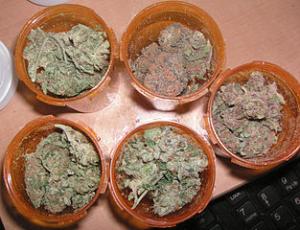Pain is a drag. And chronic pain is a never-ending drag. Unfortunately, as we grow older, we can expect to increasingly suffer its torments. Half of older adults who live on their own report suffering from chronic pain. For people in elderly care facilities, that figure jumps to somewhere around 80%.

In recent years, we have seen increasing evidence that one substance can reduce both pain and the reliance on opioids to treat it, and that its use can have a positive impact on fatal opioid overdoses. That substance is marijuana.
As the Johns Hopkins Bloomberg School of Public Health reported in 2014, "In states where it is legal to use medical marijuana to manage chronic pain and other conditions, the annual number of deaths from prescription drug overdose is 25% lower than in states where medical marijuana remains illegal."
Now, new research findings from Care By Design, one of California's leading medical marijuana producers, add more evidence of the positive role marijuana can play in treating chronic pain and reducing dependence on opioid pain medications. The study surveyed 800 patients, mostly between 50 and 70, more than 80% of whom reported suffering from chronic pain, half of whom reported suffering from acute pain, and more than 40% of whom reported suffering from both.
These patients were in a world of hurt and had tried a number of pain management tools—opiates, medical marijuana, anti-inflammatory agents (NSAIDS), nerve blockers, exercise/physical therapy, and surgery—with respondents reporting trying an average of four of them. A quarter of patients reported having tried all six.
The patients reported that marijuana was very effective for pain, with few negative side effects. That was in striking distinction to opiates, which patients also said were effective for pain, but had a significant negative impact on quality of life for a significant number of them. In fact, the differences between the two substances in terms of quality of life were so dramatic they led to dramatic changes in patient behavior.

"The study’s most striking finding was cannabis’ apparent impact on opiate reliance: Ninety-one percent of survey respondents reported that they decreased the amount of opiates they were taking or eliminated them altogether," Caston continued.
The study also found while marijuana, opiates, exercise/physical therapy, and NSAIDS all provided noticeable pain relief in more than half the patients, marijuana was the only pain management tool where there were no reports of worsening pain. And half of the patients using opiates reported that they had a negative impact on overall well-being, interfering with mood, energy, sleep, and functional abilities.
More than half of the patients reported using both marijuana and opiates to manage pain. But as noted above, nine out of 10 reduced or eliminated their opiate consumption after beginning to use marijuana. And nearly two-thirds (63%) said they were now off opiates altogether.
Over half of respondents reported that they had used both cannabis and opiates for pain management. Of great interest was the impact of cannabis therapy on opiate usage: Ninety-one percent of this subgroup reported that they used fewer or no opiates after beginning cannabis therapy. Sixty-three percent said that they went off opiates altogether.
"A tenet of healthcare in the United States is 'First, do no harm,'" the study concluded. "Patient reports of cannabis’ efficacy together with its low side effect profile suggest that it should be considered as a first-line treatment for pain and/or as an adjunct treatment to opiates rather than as a medication of last resort."
In other words, if we want to reduce the reliance on opioids, with all their negatives, for the management of pain in an aging population, we should be easing access to medical marijuana. With medical marijuana legal in 25 states, we're halfway there.
This work by StoptheDrugWar.org is licensed under Creative Commons Attribution-ShareAlike 4.0 International
Comments
I am 70 years old, try to
I am 70 years old, try to keep active but am not a fitness fanatic...I do walk a lot though, and a puff or two before makes me feel like I was 25 as far as the nagging aches and pains...and on the walk completely cognizant of traffic, my surroundings and fellow pedistrians..Highly recommended to all in my cohort...
In reply to I am 70 years old, try to by Justin Auldphart (not verified)
LEAP Longterm Episodic Associative Performance memory
If only everyone would take Justin's word for it and think of cannabis as a means of preparing for success at life-affirming exercise (rather than the stoner clicues like "mellows me out, helps me relax" etc.). My theory is that cannabinoids re-energize long-buried performance memories which surge up out of the unconscious vault, re-combine in consciousness, and enrich behavior with ideas and variety helping avoid tiresome overconcentration, overspecialization and repetition (another jargon word for what we need is multi-tasking).
The cannabis plant is actually an expert at that-- the sticky oil on the trichomes attracts not only male cannabis pollen but thousands of other kinds of pollen or other windborne elements so that this one plant experiences and responds to a great variety of influences and information about the natural world. So someone like Justin "remembers" rhythmic variations which make walking more refreshing and more intelligent. Good news: doesn't co$t much herb, I experience what he's talking about after one or two 25-mg single vapetokes in a flexdrawtube oneheater.
I saw something on a website which enriched my understanding of this: someone advised the 4-7-8 method which consists of inhaling 4 seconds, holding the air 7 seconds (mentally counting, or using some memorized music bits etc.) and then breathing out even more slow for 8 seconds. Now combine this breathing formula, or some other you like, with the timing of physical movement (the kind of combination yoga is basically about I think).
Add new comment